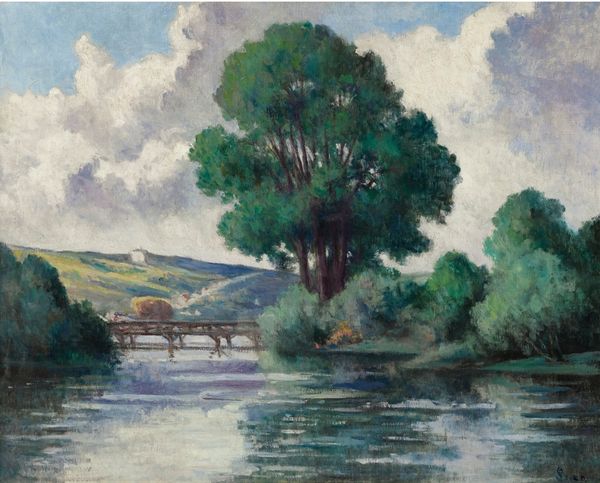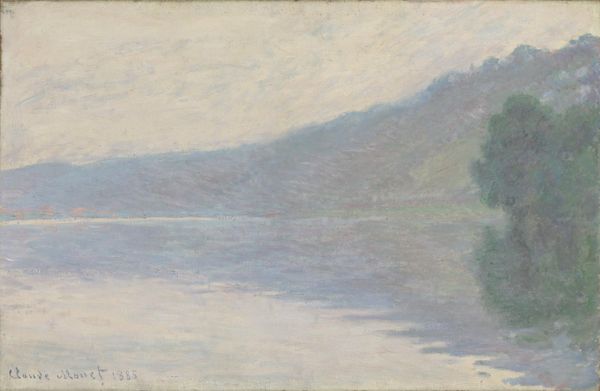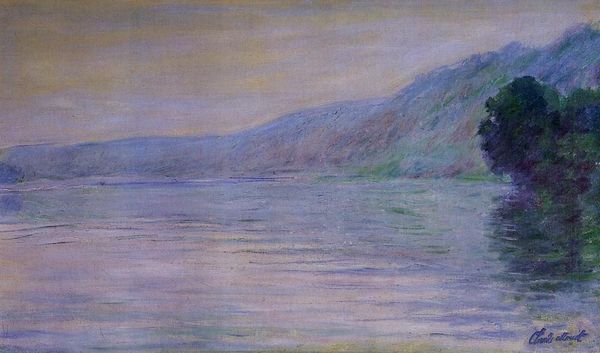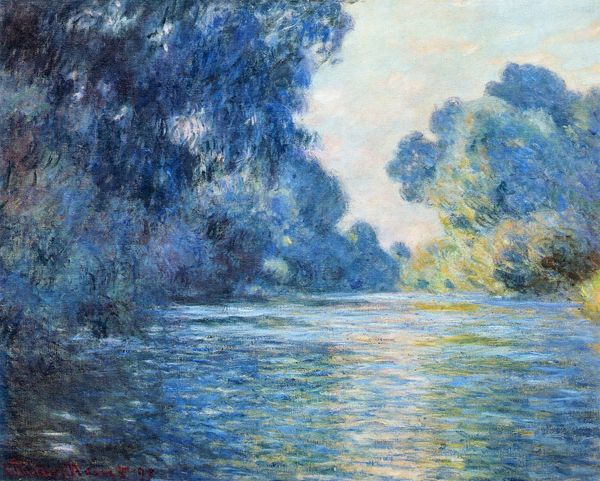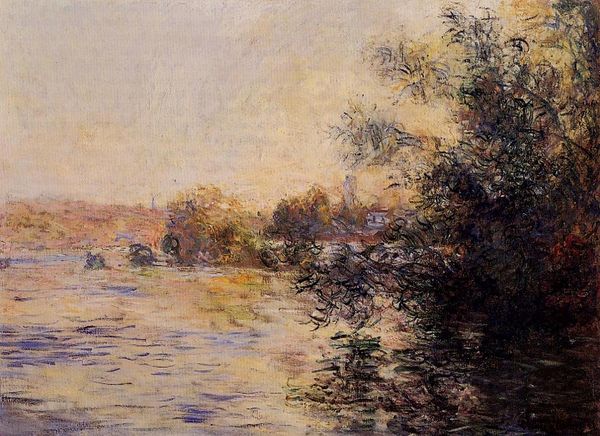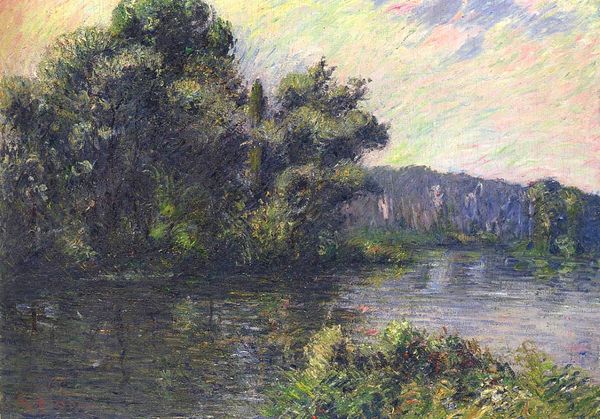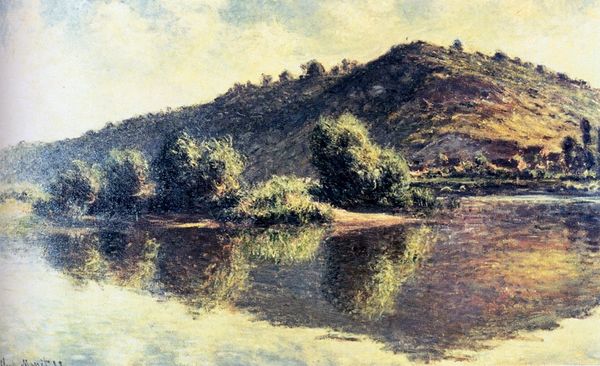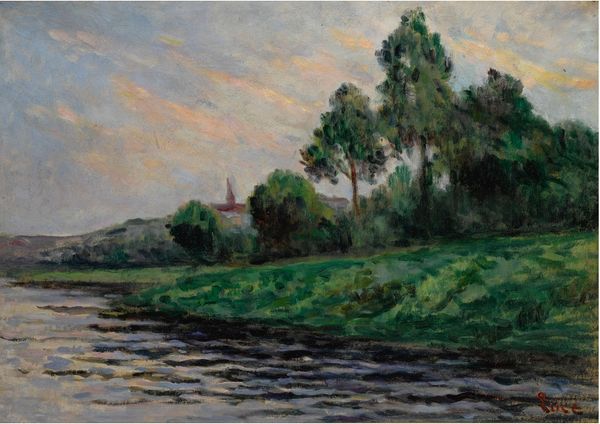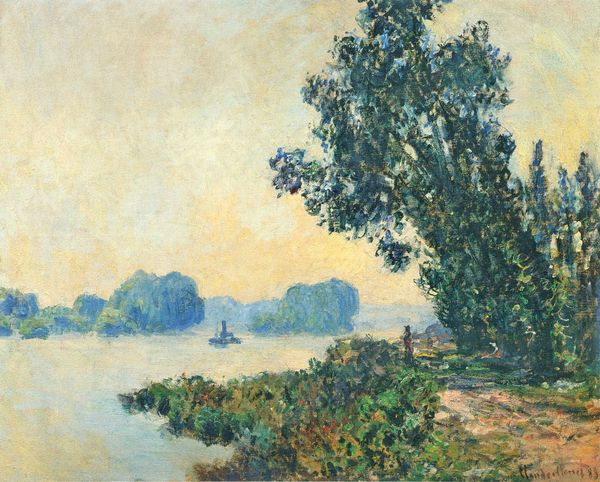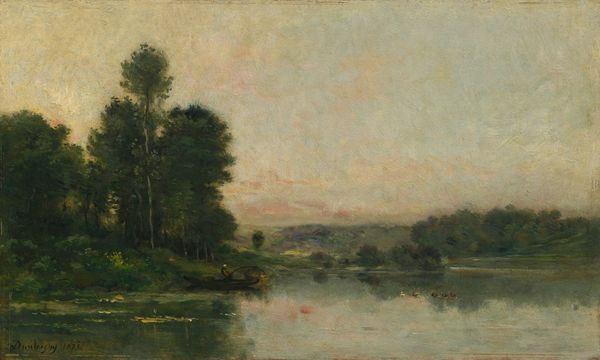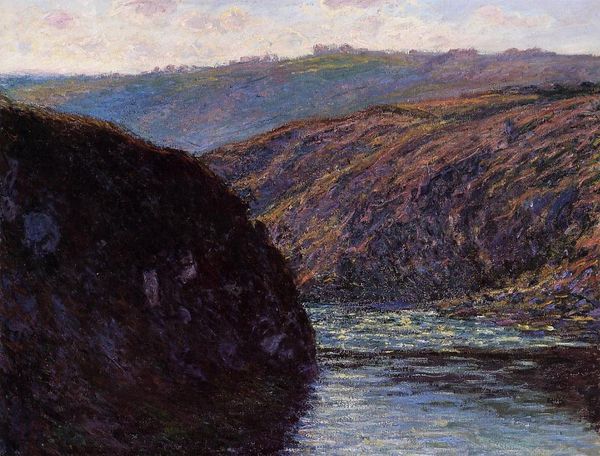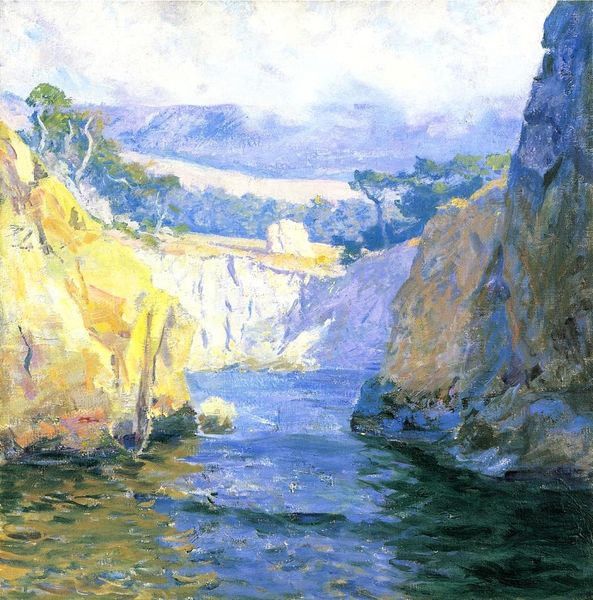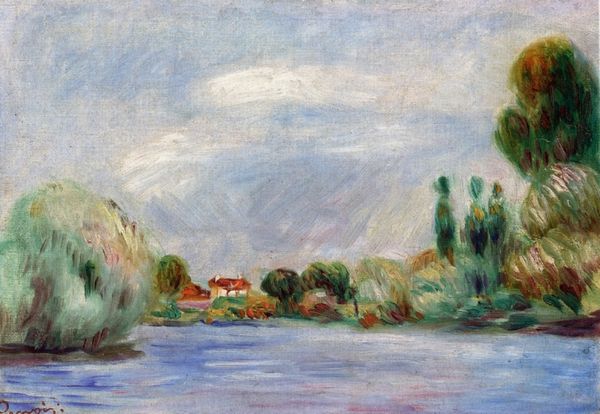
Copyright: Public domain
Curator: Before us hangs Claude Monet's "The Seine at Port-Villes, Clear Weather," an oil on canvas completed in 1894. Editor: It's… remarkably placid. The soft colors, the horizontal composition—everything contributes to a sense of utter tranquility. Curator: Absolutely. Consider the horizontal bands—the sky, the water, the far bank, each defined by subtly different brushstrokes. Monet is deconstructing our perception, forcing us to recognize the materiality of paint while simultaneously creating an illusion of depth. Editor: And that illusion is intertwined with the rapid industrialization and urbanization transforming the French landscape during that period. Paintings like this reinforced idyllic, perhaps nostalgic views of the countryside. How accessible was it to the average person to get out to places like this? The impression of a pastoral life might be misleading if most Parisians were stuck breathing fumes. Curator: An important point. Notice how the touches of pale yellow and lilac break up the predominant blue-green tonality. They don't just represent light; they create internal echoes and rhythmic vibrations that destabilize the represented scene. Semiotically, this reveals the limitations of mimetic representation. Editor: But doesn't that "limitation" itself become a powerful tool? By visually abstracting, by rendering light and water in discrete strokes, Monet offers commentary on nature’s mutability, which gains relevance in a society dealing with accelerated and seemingly immutable change. The bourgeoisie visiting salons during this era engaged with similar imagery, contributing to the development and marketing of new communities emerging beyond the edges of big cities. Curator: Precisely! This allows for an entry point into his technique which eschews a commitment to representing solid forms. Instead, the scene is composed of reflected light, shadow and color which are meant to evoke the emotional and visual experience. Editor: I see it as a mirror of societal dreams. A fleeting, yet lasting, vision of how progress could coexist with unspoiled nature, even if the reality on the ground was far more complex. Curator: A worthwhile reminder that pictorial form holds so much sway over culture! Editor: I'm walking away with a new perspective. These brushstrokes and colors… reveal even deeper layers of meaning when seen within a larger history.
Comments
No comments
Be the first to comment and join the conversation on the ultimate creative platform.
